[ENG]
After the first few days in Greece, which we spent almost entirely on the beach, it was time to go to the center of the country and spend a few days there. In our further plans, we had two main goals: going to Olympus and visiting the monasteries in Meteora. However, after a little analysis, it turned out that we did not plan to visit the monuments of ancient Greece at all. The truth is that the most ancient monuments can be found in the south of Greece, especially on the Peloponnese Peninsula, and the region of northern Greece is not so rich in this respect, but there are exceptions. One of such exceptions is the city of Vergina, located in the Greek region called Macedonia. The town has about 1,200 residents, but in the past it was much larger. There is an archaeological site there, which was added to the UNESCO World Heritage List in 1996. In ancient times, the city of Aigai was located here and it was the oldest capital of ancient Macedonia. When the capital was moved to Pella, Aigai served as a necropolis for the old kings and most important people for Macedonia. The main attraction of this place is this complex of chamber tombs, called the Tombs of the Kings. Apart from that, you can also admire the Royal Palace and the ruins of the amphitheater, where Philip II, father of Alexander the Great, died. Unfortunately, we were not given this opportunity, because after setting off from the parking lot along a narrow path leading to the archaeological site, we were turned off by the fence and information about some renovation work taking place there.
[PL]
Po pierwszych dniach spędzonych w Grecji, które niemal w całości poświęciliśmy na plażowanie przyszedł czas na wyjazd w centrum kraju i spędzenie tam kilku dni. W dalszych planach mieliśmy dwa główne cele wyjście na Olimp oraz odwiedzenie klasztorów w Meteorach. Jednak po małej analizie wyszło na to, że w naszych planach nie mamy wcale zwiedzania zabytków antycznej Grecji. Prawda jest taka, że najwięcej zabytków starożytności można znaleźć na południu Grecji zwłaszcza na Półwyspie Peloponeskim, a rejon północnej Grecji nie jest pod tym względem, aż tak bogaty, ale są wyjątki. Jednym z takich wyjątków jest położona w Greckim regionie zwanym Macedonia miasto Wergina. Miasteczko liczy około 1200 mieszańców, ale w przeszłości było zdecydowanie większe. Znajduje się tam stanowisko archeologiczne, które w roku 1996 zostało wpisane na Listę Światowego Dziedzictwa UNESCO. W starożytności znajdowało się tutaj miasto Ajgaj i była to najstarsza stolica starożytnej Macedonii. Gdy przeniesiono stolicę do Pelli, Ajgaj spełniało funkcję nekropoli dawnych królów i najważniejszych ludzi dla Macedonii. Główną atrakcją tego miejsca są właśnie ów kompleks grobowców komorowych, nazwanych Grobowcami Królewskimi. Poza tym pod chmurką można podziwiać jeszcze Pałac Królewski oraz ruiny amfiteatru, w którym zginął Filip II ojciec Aleksandra Macedońskiego. Niestety nam nie było to dane, bo po ruszeniu z parkingu wąską dróżką prowadząca do stanowiska archeologicznego odbiliśmy się od ogrodzenia i informacji o trwających w tym miejscu jakiś pracach renowacyjnych.
[ENG]
After a somewhat unsuccessful visit to Vergina, we went to a neighboring town to visit the supposedly beautiful church of St. Demetrius in Palatitsia. The navigation googles directed us a bit wrong, and instead of driving right up to the church and reaching the nearby parking lot, we took a different road, which turned out to be a dirt road that disappeared into a corn field with every meter. So we parked in a corn field about 500 meters from the church and bravely set off through the heat towards our destination. It quickly turned out that every cloud has a silver lining, because along this dirt road leading to the back of the church of St. Demetrius in Palatitsia, there was a corn field on one side, and a row of fig trees on the other. Thanks to this, we were able to taste figs freshly picked from the tree, and although they were not yet fully ripe, they were still very tasty. After reaching the temple, it did not seem like anything special at first, but there is something extraordinary inside. It is characterized by rich wall paintings, which proves that this region has always been prosperous and that the inhabitants of the region could afford to make such spectacular wall paintings. Half of the wall paintings were created by Nicholaos Zografos, and their main theme is the life of Christ and Saint Demetrius, as well as the figures of saints, prophets and martyrs of the church. The remaining paintings were made by an unknown artist and depict the Last Judgement, in which, quite boldly, on the side of the triumphant figures we can see the victorious Alexander of Macedon, known as the Great.
[PL]
Po trochę nieudanym zwiedzeniu Werginy udaliśmy się do sąsiedniego miasta po to aby zwiedzić ponoć przepiękny kościół św. Dymitra w Palatitsia. Nawigacja gogle pokierowała nas trochę błędnie, i zamiast podjechać pod sam kościół i dotrzeć na pobliski parking, my pojechaliśmy jakaś inną drogą, która okazała się drogą polną wręcz zanikającą w polu kukurydzy z każdym kolejnym metrem. Zaparkowaliśmy więc w polu kukurydzy w odległości około 500 metrów od kościoła i dziarsko poprzez upał ruszyliśmy w kierunku naszego celu. Okazało się szybko, że nie ma tego złego co by na dobre nie wyszło, bo wzdłuż tej polnej drogi prowadzącej na zaplecze kościoła św. Dymitra w Palatitsia po jednej stronie rosło pole kukurydzy, a pa drugiej stronie rósł szpaler drzew figowych. Dzięki temu mogliśmy skosztować sobie świeżo co zerwanych z drzewa fig, a choć nie były one jeszcze tak w zupełności dojrzałe to i tak były one bardzo smaczne. Po dotarciu do świątyni z początku nie wydawała się ona niczym szczególnym, jednak wewnątrz znajduje się coś niezwykłego. Charakteryzuje się ona bogatymi malowidłami ściennymi, co dowodzi temu, że w tym rejonie od zawsze panował dobrobyt i mieszkańców regionu stać było na wykonanie tak spektakularnych malowideł naściennych. Połowa malowideł ściennych została stworzona przez Nicholaosa Zografosa, a ich tematem przewodnim jest życie Chrystusa i świętego Dymitra, oraz postacie świętach, proroków i męczenników kościoła. Pozostałe malowidła zostały wykonane przez nieznanego artystę i przedstawiają Sąd Ostateczny, na której dość zuchwale, po stronie postaci triumfujących widać zwycięskiego Aleksandra Macedońskiego zwanego Wielkim.
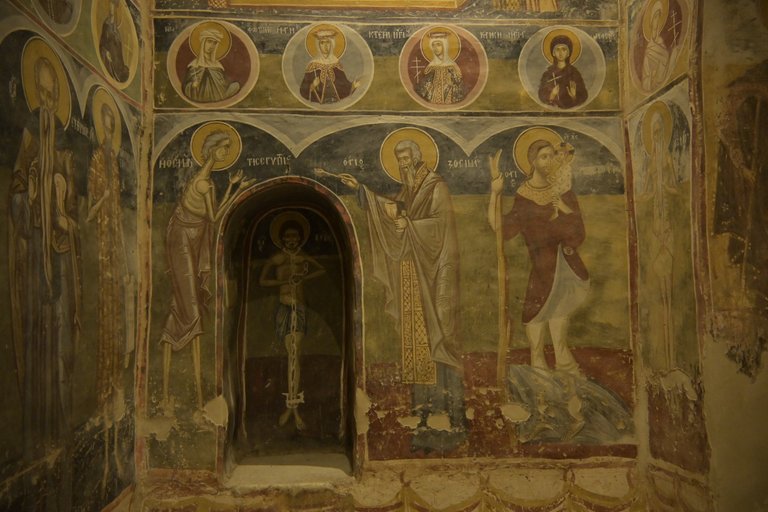
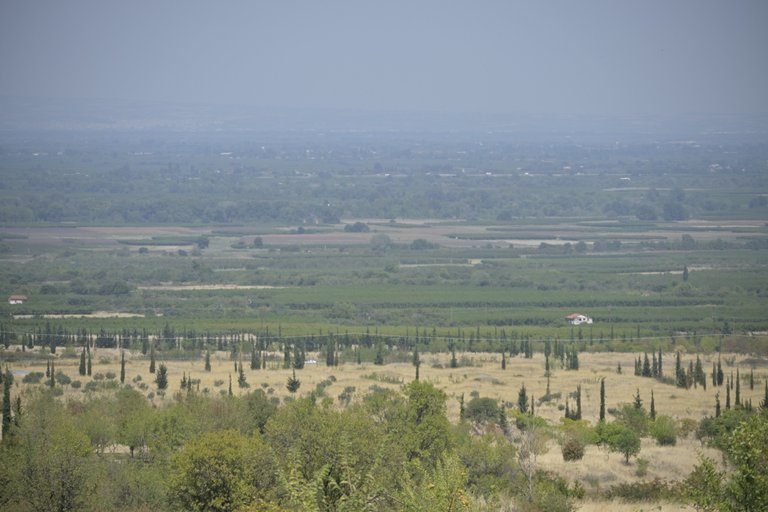
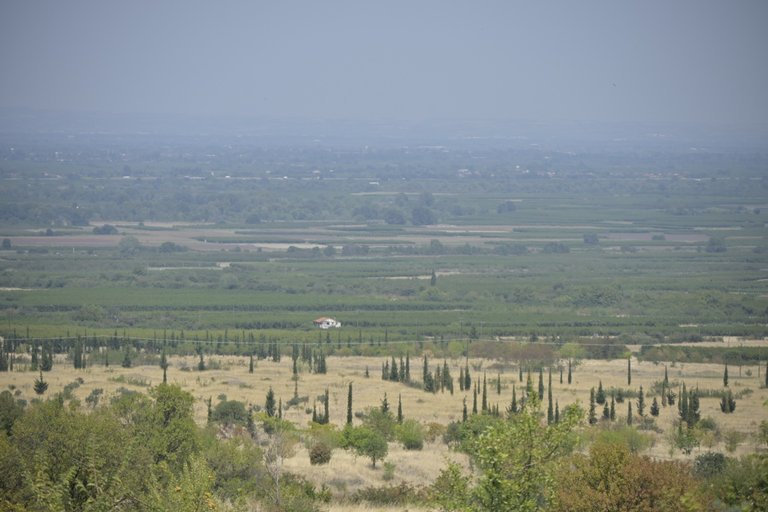
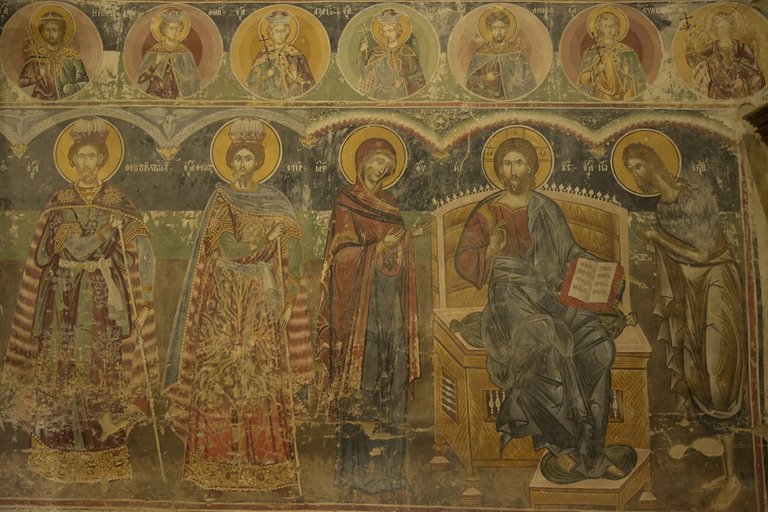
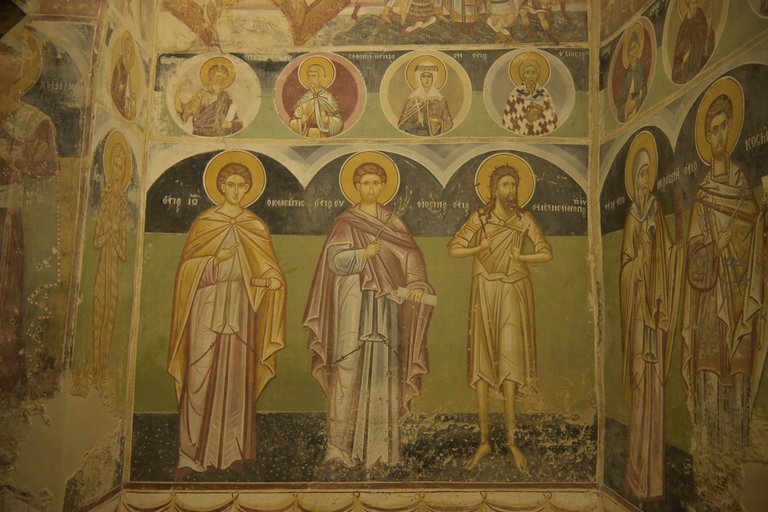
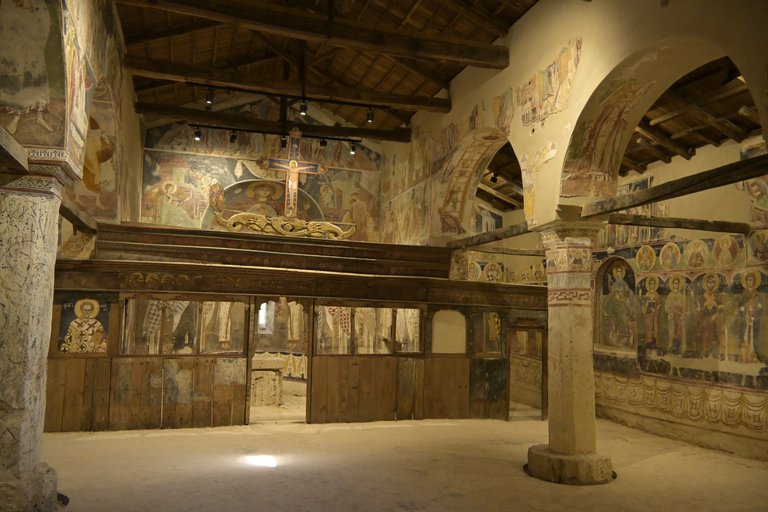


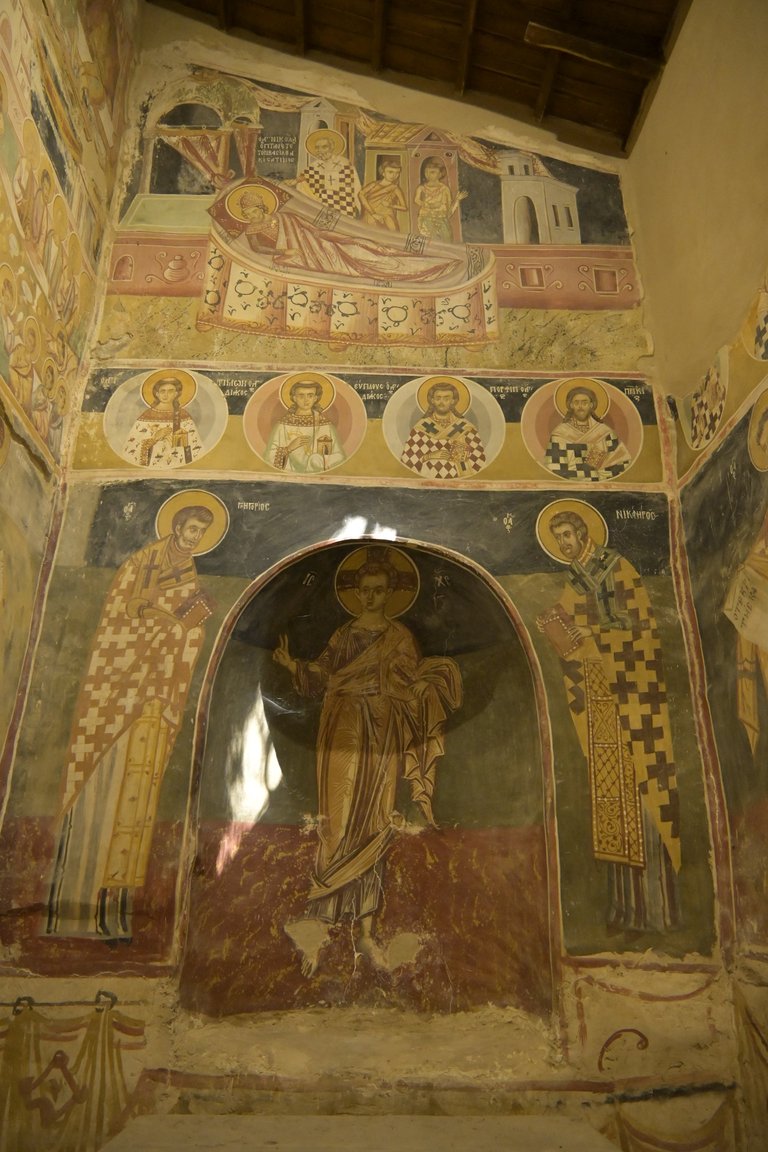

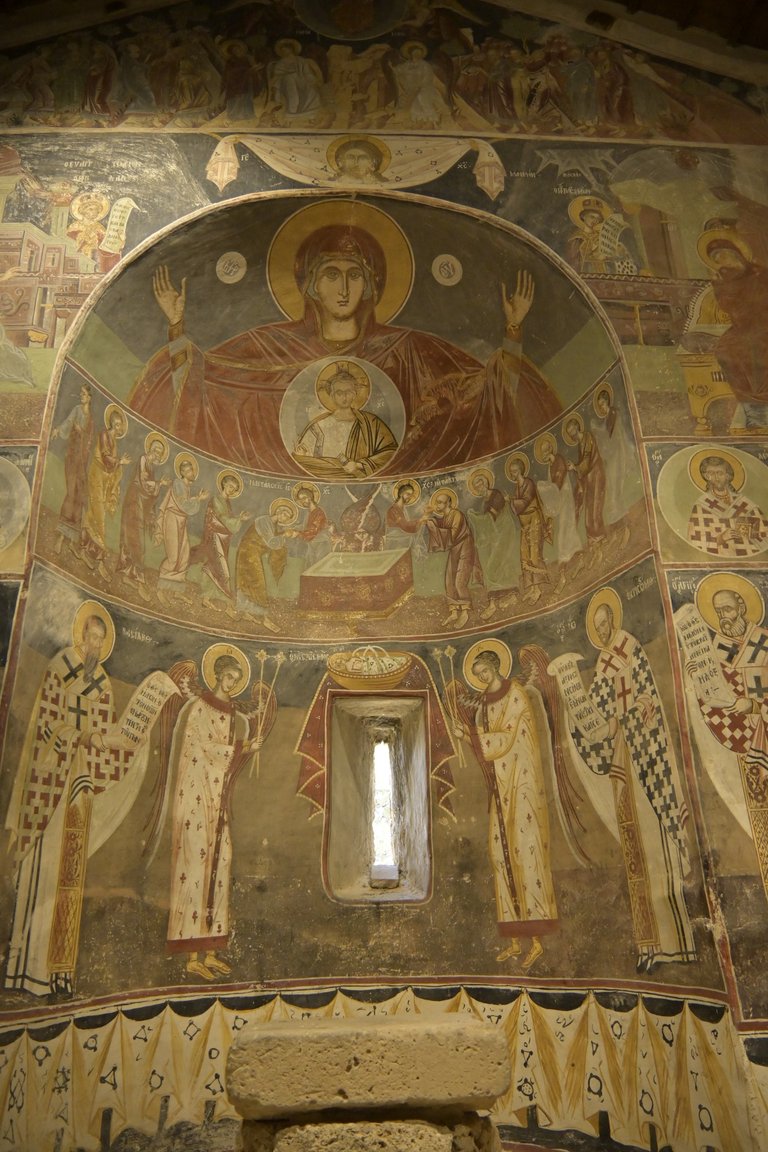
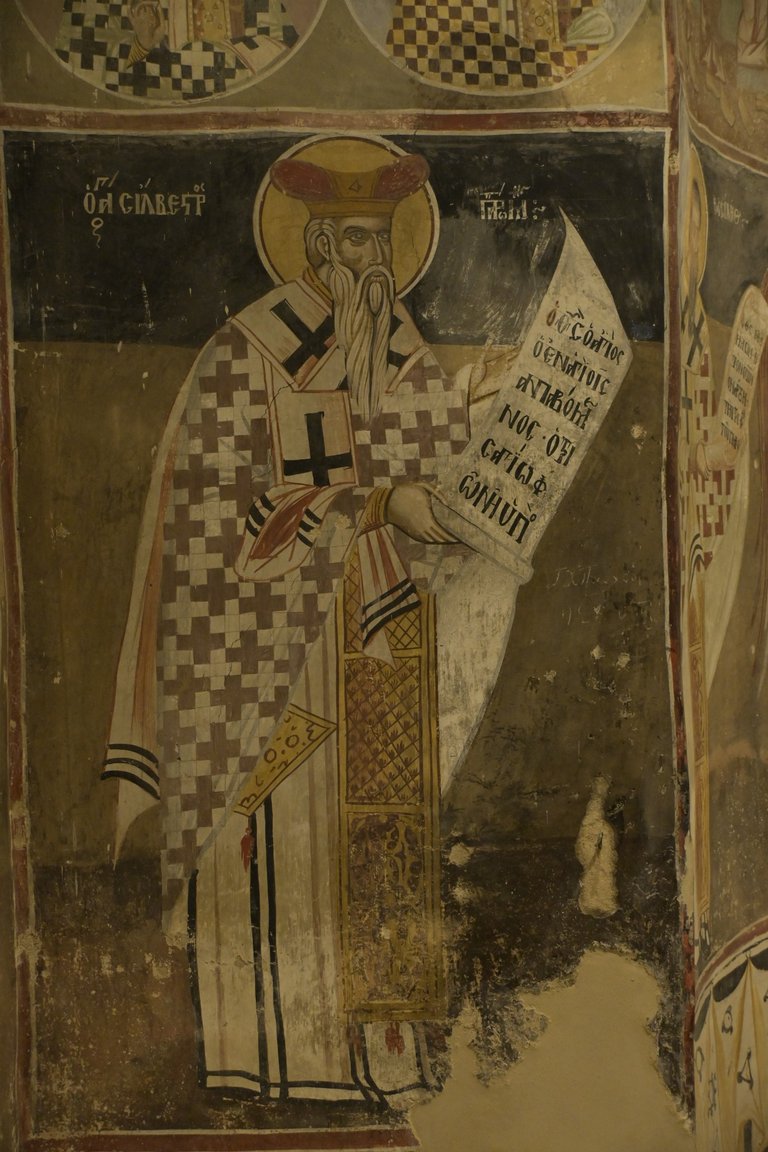

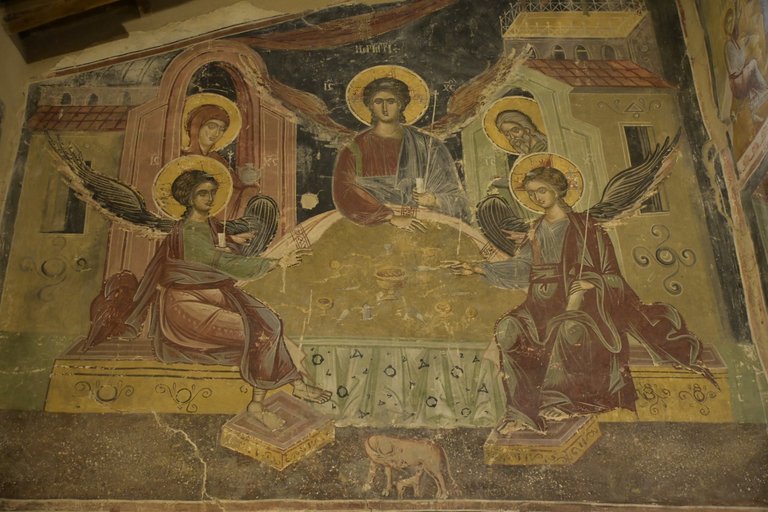
Congratulations, your post has been added to the TravelFeed Map! 🎉🥳🌴
Did you know you have your own profile map?
And every post has their own map too!
Want to have your post on the map too?
- Go to TravelFeed Map
- Click the create pin button
- Drag the marker to where your post should be. Zoom in if needed or use the search bar (top right).
- Copy and paste the generated code in your post (any Hive frontend)
- Or login with Hive Keychain or Hivesigner and click "create post" to post to Hive directly from TravelFeed
- Congrats, your post is now on the map!
PS: You can import your previous Pinmapple posts to the TravelFeed map.Opt Out
Congratulations, your post has been added to WorldMapPin! 🎉
Did you know you have your own profile map?
And every post has their own map too!
Want to have your post on the map too?
Congratulations @olusiu! You received the biggest smile and some love from TravelFeed! Keep up the amazing blog. 😍
Thanks for using TravelFeed!
@for91days (TravelFeed team)
PS: Why not share your blog posts to your family and friends with the convenient sharing buttons on TravelFeed?
Hello olusiu!
It's nice to let you know that your article will take 11th place.
Your post is among 15 Bestszejq articles voted 7 days ago by the @hive-lu | King Lucoin Curator by
You receive 🎖 0.2 unique LUBEST tokens as a reward. You can support Lu world and your curator, then he and you will receive 10x more of the winning token. There is a buyout offer waiting for him on the stock exchange. All you need to do is reblog Daily Report 455 with your winnings.
Buy Lu on the Hive-Engine exchange | World of Lu created by szejq (Lucoin) and get paid. With 50 Lu in your wallet, you also become the curator of the @hive-lu which follows your upvote.
STOPor to resume write a wordSTART